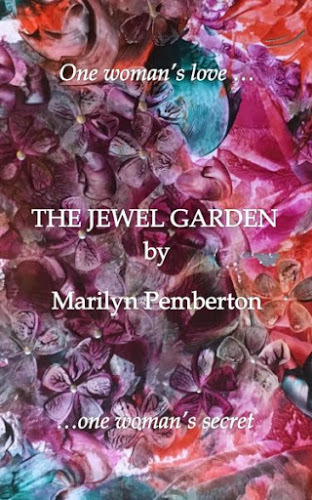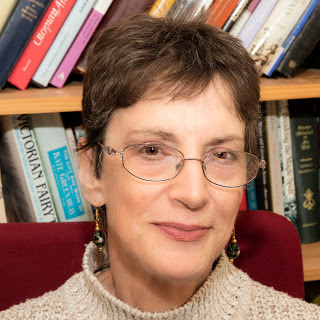Mirella Sichirollo Patzer's Blog, page 5
August 2, 2020
Edith of Wessex - The Confessor's Wife
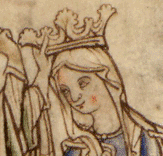 In a time when barren wives were customarily cast aside, how did Edith not only manage to stay married to King Edward the Confessor, but also become his closest advisor, promote her family to the highest offices in the land, AND help raise her brother to the throne? She was obviously highly regarded in her day: she is one of only three women depicted in the Bayeux Tapestry. And highly educated, speaking several languages and having studied grammar, mathematics, rhetoric, weaving, and embroidery, among other things.
In a time when barren wives were customarily cast aside, how did Edith not only manage to stay married to King Edward the Confessor, but also become his closest advisor, promote her family to the highest offices in the land, AND help raise her brother to the throne? She was obviously highly regarded in her day: she is one of only three women depicted in the Bayeux Tapestry. And highly educated, speaking several languages and having studied grammar, mathematics, rhetoric, weaving, and embroidery, among other things. With her family’s constant betrayal, her mother-in-law’s condescension, and the upheaval facing the country, Edith’s path is complicated and, at times, treacherous, and her position by no means secure. Still, she both survived AND thrived. Truly a fascinating woman!
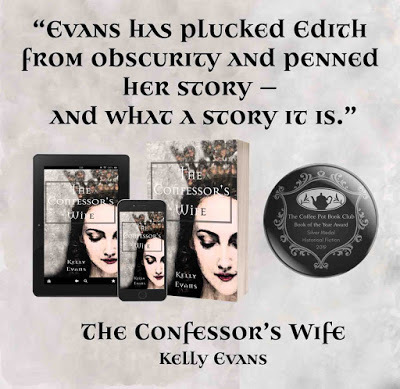
http://mybook.to/ConfessorsWife
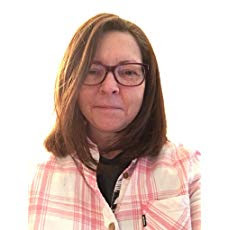
Author
Kelly Evans
Born in Canada of Scottish extraction, Kelly Evans graduated in History and English from McMaster University in Ontario, Canada. After graduation, she moved to the UK where she worked in the financial sector. While in London Kelly continued her studies in history, focussing on Medieval History.
Kelly now lives in Toronto, Canada with her husband Max and two rescue cats. Her books include The Confessor’s Wife, The Northern Queen, The Mortecarni, and Revelation, all set in Medieval Europe. Kelly's first children's book will be released soon, a historical ghost story, as will her first young adult historical fiction novel, about Elizabeth I. When not writing, Kelly enjoys reading, playing medieval recorder, and watching really bad old horror and sci-fi movies, preferably with lots of popcorn.
Website: https://www.kellyaevans.com









July 26, 2020
George Sand (Amantine Lucile Aurore Dupin) 1804-1876
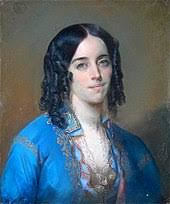 George Sand (née Amantine Lucile Aurore Dupin) (1804-1876) shone brightly as one of very few 19th century female authors. Born into a world where only men could be writers, she often imitated them in dress and manner by wearing pants and smoking cigars. She relentlessly pursued of her wants: writing, lovers, and family. Along with novels, she wrote urging reforms to better the lives of the poor and working class, gain suffrage for men and women, and capture equal rights for women.
George Sand (née Amantine Lucile Aurore Dupin) (1804-1876) shone brightly as one of very few 19th century female authors. Born into a world where only men could be writers, she often imitated them in dress and manner by wearing pants and smoking cigars. She relentlessly pursued of her wants: writing, lovers, and family. Along with novels, she wrote urging reforms to better the lives of the poor and working class, gain suffrage for men and women, and capture equal rights for women.
Early in her life, she inherited her grandmother’s estate, Nohant, in Central France. Married only once, she took many lovers, including Frederic Chopin, with whom she had a nine-year affair. They shared a passion for the arts—he for the piano and she for literature—although their discussions traveled far and wide. That bond kept them together well beyond Chopin’s “usefulness” as a satisfying companion due to his debilitating tuberculosis. Although their breakup was harsh and long in coming, Sand tended to him while together as she would any child. Toward the end, she resented the encumbrance and freely admitted to several dalliances.
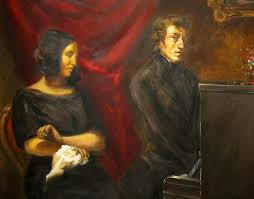
“When he was sick unto death in Majorca, he composed music imbued with the very fragrance of Paradise. I am so used to seeing him lost in the clouds that it doesn’t seem to me as if life or death means anything to him. He himself really doesn’t know on what planet he is living, and has no awareness of life as we conceive and experience it,” said Sand.
She wrote every night from midnight to six a.m., slept till noon, then took care of her children. Such a dedicated schedule resulted in many novels, plays, an autobiography, political tracts, newspaper articles, and several volumes of personal correspondence. She risked societal ridicule for doing what she wanted but is still revered in France today. Independent, gifted, and willful, she brooked no nonsense when it came to her friendships or criticism of her works.
In The Education of Delhomme, George Sand is the monarch’s bête noire because he believes her writings are fomenting rebellion among the working class. So great is the king’s fear of further turmoil that he orders his henchman to hire the main character, Beaulieu Delhomme, to spy on her. The enmity between Delhomme and Sand springs from other reasons, but her values of fairness and an unerring focus on aiding the oppressed help her overcome such discord.
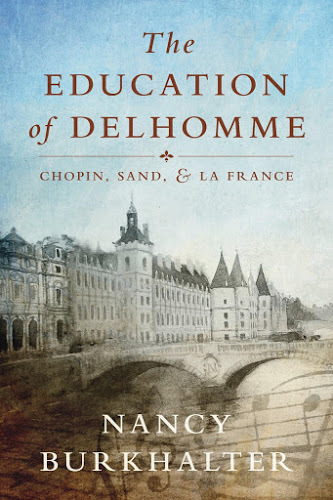
This title is scheduled for release on Nov. 17, 2020.
Amazon
AuthorNancy Burkhalter
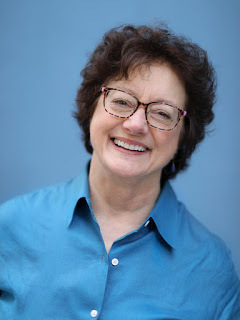
Nancy Burkhalter is an educator, writer, journalist, linguist and piano tuner. She holds a master’s degree in journalism and English education as well as a doctorate in linguistics from the University of New Mexico. She has taught composition for many years in the U.S., Germany, Saudi Arabia, Kazakhstan, and Russia. Her overseas work led to an interest in comparative education, especially critical thinking. Both observations and research resulted in her book and blog, Critical Thinking Now. In 2019, she was a recipient of Go Back, Give Back, a fellowship through the State Department to train teachers in St. Petersburg, Russia.
Burkhalter’s upcoming novel, The Education of Delhomme: Chopin, Sand, and La France, tells the story of Beaulieu Delhomme, a fictional piano tuner for the famed French pianist Frédéric Chopin.
Nancy Burkhalter resides in Edmonds, Washington.Purchase Link:
https://www.historythroughfiction.com/delhomme
History Through Fiction: https://www.historythroughfiction.com/store/the-education-of-delhomme-chopin-sand-amp-la-france / https://www.historythroughfiction.com/store/the-education-of-delhomme-chopin-sand-amp-la-france-ebook
Amazon: https://www.amazon.com/Education-Delhomme-Chopin-Sand-France/dp/1732950857/ref=sr_1_1?dchild=1&keywords=the+education+of+delhomme&qid=1593188255&sr=8-1









July 19, 2020
Those Not-So Wicked Sporting Ladies of the Wicked West - Pearl DeVere
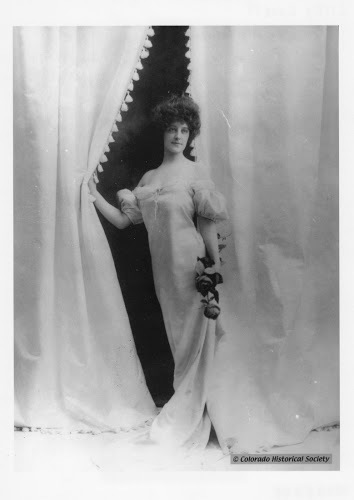 A hundred years ago they were known as soiled doves, frail sisters, bawds, painted ladies, scarlet women, fille de joie, molls, courtesans, concubines, sporting woman, denizens, strumpets, adventuresses, working girls, tarts, unfortunates, the demimonde, the tenderloin, shady ladies, jezebels, harridans and harlots, among many other names, and more often than not, were residents of a brothel, red-light district, parlor house, seraglio, hog ranch, crib, harem, the Line, whorehouse, bordello, or a bawdy house. Many of these ladies of the night had fallen unintentionally – and many intentionally -- into the sporting life as it was typically known, wishing to obscure their true names, origins and backstories, making it virtually impossible to ever reliably unravel their individual and occasionally, lurid histories.
A hundred years ago they were known as soiled doves, frail sisters, bawds, painted ladies, scarlet women, fille de joie, molls, courtesans, concubines, sporting woman, denizens, strumpets, adventuresses, working girls, tarts, unfortunates, the demimonde, the tenderloin, shady ladies, jezebels, harridans and harlots, among many other names, and more often than not, were residents of a brothel, red-light district, parlor house, seraglio, hog ranch, crib, harem, the Line, whorehouse, bordello, or a bawdy house. Many of these ladies of the night had fallen unintentionally – and many intentionally -- into the sporting life as it was typically known, wishing to obscure their true names, origins and backstories, making it virtually impossible to ever reliably unravel their individual and occasionally, lurid histories.In most western frontier towns where men significantly outnumbered women -- a ratio of at least 20 to 1 and typically far greater -- prostitutes were considered an essential, though certainly not warmly embraced, necessity by their conservative female counterparts. Decent married women were willing to put up with prostitutes to keep those randy single men away from their own otherwise puritanical daughters until those men managed to firmly affix a wedding ring on their daughters’ hand. All a young girl had was her reputation and, as was well known, if that evaporated even by innuendo, she was most likely ruined for the rest of her life as borne out in literature by Jane Austen, Henry James, Edith Wharton and countless other authors of the day.
Once a woman had crossed over that line, society tended to lump loose women into a single mold. Certainly all of them had to maintain a shrewd edge, but they were quite diverse in terms of temperament, education, worldliness, scientific and entrepreneurial endeavors.
Of these so-called fallen women, it’s interesting to note that the madams, or owners, of many brothels, were wealthy, powerful and quite influential individuals whose brothels became centers of community, arts and culture in western towns. Some of the most powerful madams were serious patronesses of art, music and education, as well as being philanthropists and major real estate moguls.
Being a madam was one of the few actual “careers” afforded a woman in the 19th Century -- the earliest prototype we have of a career woman, in fact! Madams (and other wealthy prostitutes) donated money to charities, hospitals, churches, schools, cared for the impoverished and sick, and housed the homeless when no one else could be bothered. They were involved with helping fund many cities’ initial infrastructures of gas, telephone and electric lines as well as owning mining claims, stocks, investing in municipal bonds, even jumping into the fray to keep banks afloat during challenging financial years. There was a huge demand for their money, but the women themselves, as well as their children, were forever shunned by society.
According to June Willson Read’s biography “Frontier Madam: The Life of Dell Burke, Lady of Lusk”, huge financial contributions by Dell Burke, a madam in Lusk, Wyoming, created infrastructures such as railroads, waterworks and electric lines through that part of the state. Several biographers have mentioned Josephine “Chicago Joe” Hensley (or Airey), a madam in Helena, Montana who had a weekly payroll of $1,000 for numerous businesses she owned outside that of her brothel’s, paid hefty taxes on more than $200,000 in real estate holdings, and also contributed huge sums to many charities and political candidates, although she was never allowed to attend any of their meetings or even be introduced to anyone involved in those important enterprises. According to Anne Seagraves’ book “Soiled Doves: Prostitution in the Early West”, “these enterprising women, who played an important role within their communities, were never invited to join or attend a commercial club. They were not accepted by society, and in most cases, were not even protected by the law due to their profession.”
Mattie Silks, a wealthy Denver brothel owner, claimed that she had become a madam simply as a successful business venture and that she had never worked as a prostitute. This claim was quite interestingly never disputed. And Georgia Lee, a Fairbanks, Alaska prostitute, was quietly involved in funding many civic affairs and co-founded the Fairbanks branch of the Humane Society according to “Good Time Girls of the Alaska-Yukon Gold Rush” by Lael Morgan.
Another well known beautiful face who was a particular enigma was Etta Place, who for those of us enamored many years ago with Paul Newman and Robert Redford in “Butch Cassidy and The Sundance Kid”, was either a high-class parlor attraction at Fanny Porter’s infamous house in Hell’s Half Acre in San Antonio, Texas, or she was a sedate schoolteacher in a one-room rural schoolhouse, helping to mastermind many of the infamous duos’ train robberies, something of a Robin Hood operation, according to Michael Rutter’s “Boudoirs to Brothels – the Intimate World of Wild West Women”. A young lady who led an incredibly complex double life, the beautiful Etta Place quite skillfully disappeared without a trace in the early 1900s.
Many prostitutes had exceptional nursing and mid-wife skills, often obtained by necessity, along with vast knowledge of herbs, medicinal concoctions and other healing remedies. Occasionally they were clandestinely called upon to assist a married woman experiencing a difficult childbirth, but that same woman would turn her head the opposite direction afterwards if she encountered the prostitute on the street, refusing to acknowledge an acquaintance. Additionally, women were not allowed any form of birth control (which was often unreliable anyway) and some prostitutes were quietly skilled abortionists, even aiding “respectable women” who wished to end an ill-timed pregnancy. In the years between 1850 and 1870, one historian estimated that one abortion was performed for every five or six live births in America.
Although she later denied it, Margaret Mitchell originally claimed that her fictional character of Belle Watling in “Gone with the Wind” was based on a madam in Lexington, Kentucky known as Belle Brezing, who died just after the movie’s 1939 release. Ms. Mitchell’s husband was from Lexington and familiar with Belle Brezing’s checkered history, including the fact that the woman was quite well known as an excellent nurse. In both the book and the movie, Belle Watling indeed claims to be a nurse and donates a rich purse filled with gold coins to the rapidly failing Confederate cause through Melanie Wilkes, the only married woman within the group willing to be seen accepting such a windfall from one of Atlanta’s most notorious madams.
Pearl DeVere, who was the madam of the Old Homestead brothel in Cripple Creek, Colorado, like so many others of the demimonde, wove multiple stories about her early life that makes it impossible to verify any of the tales. Not even a verifiable photograph of the young woman exists. Born in Evansville, Indiana in 1859 as Eliza Martin into what certainly appears to have been a well-to-do family, exactly what led her into the world of prostitution is somewhat mysterious, based on the many different tales that Pearl herself fabricated over her short life. She arrived in Cripple Creek possibly via Denver, around the time of the 1893 repeal of the Silver Act and set herself up quickly in the “trade” in the newly booming mining town. Her sophistication, remarkable intelligence, and appreciation of fine arts and culture helped her build one of the most influential brothels in the country.
So who was Pearl DeVere? Unless you’re from Colorado, have studied the Cripple Creek gold rush or have actually visited Cripple Creek and maybe participated in the annual Pearl DeVere bed race or some other quaint festival, you’ve probably never even heard of this woman. And, as we’ve so often heard in recent years, history is really just “his” story and rarely also “her” story, particularly with respect to “career” women and their contributions to our past.
Mabel Barbee Lee’s memoir, “Cripple Creek Days”, published in 1958, was drawn from her recollections as a very young child having grown up in the region. In the acknowledgements Ms. Lee mentions that one of her neighbor’s names, Molly Letts, was a pseudonym in her book because she had been a former prostitute and even after fifty years had ensued, she refused to let the woman’s reputation be sullied.
Without question, however, at age 11, Mabel’s recollections of Pearl DeVere were firmly stamped on her memory, even though Mabel’s timelines appear to be a little fuzzy on occasion. In mining camps very few women had beautiful stylish clothes or jewelry or immodest displays of wealth, certainly very impressionable items for a pre-teen. Pearl was an excellent dress designer and wore her creations perfectly over her marvelously sculpted physique. At age 31 she was a beautiful girl with red hair, bright flashing eyes and a slender build sporting gorgeous tight-fitting clothes and it was said that she never wore the same outfit twice. She was strong-willed, shrewd, very well read, eloquent, and a very smart businesswoman.
According to Janet Lecompte’s introduction in “Emily: The Diary of a Hard-Worked Woman”, a journal by a 42-year-old Denver divorcee: “In 1890 the average working woman in the United States had started to work at age 15 and was now 22, earning less than $6 a week for a 12-hour day. In Denver, 15% of all women worked in 1890, most of them as domestic help, laundresses, or seamstresses, some making as much as $4-$6 per week.” Unlike out East, there were very few factories or mills. A miner’s wages typically brought a working man $3 per day for a nine-hour day. By contrast, a wealthy man booking a stylish young courtesan’s company at the Old Homestead was shelling out $250 for the evening and had to book well in advance! One can easily see the attraction for a young cultured woman such as Pearl to have built such an empire!
Mabel Barbee Lee goes on to say in her memoir: “Pearl DeVere became my secret sorrow, the heroine of my fondest daydreams, mysterious, fascinating and forbidden.” Even some fifty years afterwards, Mabel vividly recalled hearing a gramophone playing from the Old Homestead’s windows, an expensive toy back in those days, and distinctly remembers the many details of Pearl’s unusual New Orleans’ early jazz style funeral cortege. Accounts of the Old Homestead’s opulent parlor with a telephone, expensive Turkish carpets, chandeliers and the unheard of extravagance of two bathtubs also fill Mabel’s remembrances. These finer houses demanded an almost European-like adherence to order, an essential step towards our country’s slowly working its way towards the civil society we’ve attempted to establish since that time.
Along with so many others of the demimonde, Pearl’s contributions to the economic and political movements of the era were obscured as we’ve followed “his” story through our country’s development. However, such acknowledgement is richly deserved and a sad omission. These enterprising women’s contributions are long forgotten – or in many cases, were never even recognized. But silently, all around us, as our first “career” women, their intriguing legacies live on.
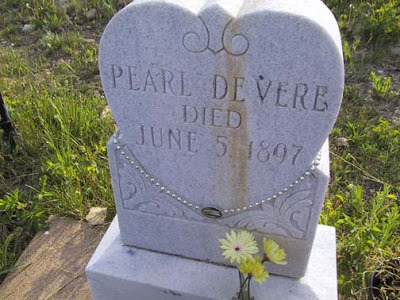
Photos courtesy Charlotte Bumgarner, owner of The Old Homestead Museum, Cripple Creek CO (1) Pearl DeVere’s grave marker – so many admirers originally placed jewelry around the heart-shaped stone that unfortunately the gifts stained the marble and a fence has now been erected around the tombstone to deflect such well-meaning, but destructive additions. Appropriately, however, a pearl necklace remains. (2) Lil Lovell – a beautiful prostitute in Denver who may have originally worked at the Old Homestead according to “Brothels, Bordellos, and Bad Girls - Prostitution in Colorado, 1860-1930” written by Jan MacKell Collins.
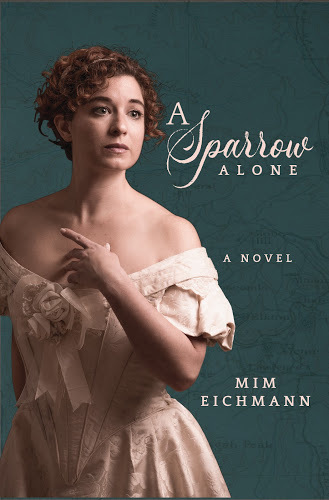
Amazon
Mim Eichmann’s debut historical fiction novel “A Sparrow Alone” – a provocative coming-of-age saga of female empowerment during the 1890s Cripple Creek, CO gold rush -- was published on April 15, 2020 by Living Springs Publishers of Centennial, CO. Ms. Eichmann is a professional musician, singer/songwriter and choreographer living in the Chicago area. Her author website is: www.mimeichmann.com.









July 12, 2020
The Pioneer Women of California - Ellen VanValkenburgh, Emily Williams, and Eva VanValkenburg
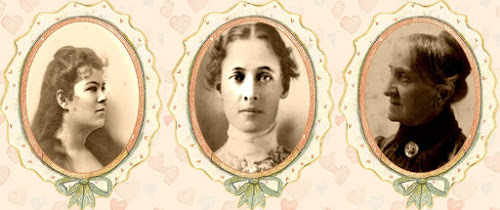
Left to Right: Eva, Emily, Elle
Before California became a state, pioneers from all over the world brought their dreams of the future there. It was a time of opportunity for everyone willing to work. Women were no different. Even though it wasn’t called women’s rights at the time, many women in early California fought for their own futures and affected the futures of all who came after. Three of these women are featured in my historical novel Under the Almond Trees.
Ellen VanValkenburgh came West from New York during the Gold Rush. She and her sister sailed not around the horn but upriver through Nicaragua, then overland to the Pacific on muleback. Her journal from that trip is extraordinary. They even wore bloomers when riding the mules! In California, Ellen married Henry VanValkenburgh. They lived in Santa Cruz, where Henry owned a paper mill on the San Lorenzo River. When he was killed by a falling tree branch in 1862, Ellen took over the running of his business. She was pregnant with their third child at the time. Running a business gave her civic awareness and she desperately wanted to vote on legislation that affected business. In 1872, she sued the county of Santa Cruz to be able to vote. The essence of her argument was that under the 14th Amendment of the US Constitution, many American women like herself were granted citizenship, and therefore, the rights of citizenship which included voting. In the official court decision, it explained that the amendment did not apply to women. California women did not get the vote until 1911.Emily Williams was the sister of Ellen’s daughter-in-law. She grew up in San Jose, California, in the early 1900s. Her dream was to be an architect, but women were not allowed licenses at that time. In addition, her father did not approve. After he passed away, Emily used her inheritance to attend a college to become an architect. She applied for an architect’s license but was denied. Julia Morgan studied in Paris and developed a reputation there, so the state of California granted her a license in 1904. Emily was not to be deterred. Without a license, Emily was limited to small structures so she and her life partner, Lillian Palmer, built houses in San Francisco, San Jose, and Pacific Grove. Lillian was a coppersmith who created amazing light fixtures. Emily designed the houses. The first house they built together still stands in Pacific Grove. Eva VanValkenburgh was Ellen’s granddaughter. She was raised with an appreciation for the strong women in her family and their independent spirits. Growing up in Inverness, California, she was a solitary child who took to photography. She sold postcards at the local store. Instead of going into photography professionally, though, she decided to marry and have a family. The traditional choices she made served her well until her daughter wanted to go to college. Eva’s husband refused to pay for it. She opened a photography business to earn the money herself.These three women embody different facets of opportunities for women. Ellen’s focus was political, Emily’s career, and Eva’s family. They fought to make their own life choices work for them, and in doing so they helped ensure that future generations would have the same rights.
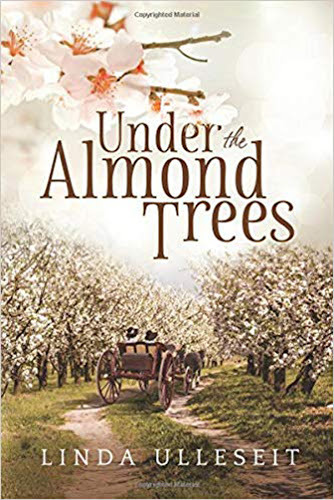
Amazon
Under the Almond Trees is the story of three ordinary women in California who lived extraordinary lives.
It starts with a falling tree branch that kills Ellen VanValkenburgh’s husband in 1862, forcing her to assume leadership of his paper mill, something women weren’t allowed to do. Women weren’t allowed to vote yet, either. Ellen decided that had to change, and became a suffragette.
In 1901, Emily Williams, Ellen’s daughter-in-law, became an architect – very much against her family’s wishes. No one would hire a woman, but Emily would not be deterred. She and her life partner Lillian set out to build homes themselves. By the 1930’s women enjoyed more freedom, including the vote. Even so, Ellen’s granddaughter Eva VanValkenburgh chose a traditional life of marriage and children, even closing her photography business at her husband’s insistence. When he later refused to pay for their daughter’s college education, Eva followed the example of her Aunt Emily and reopened her photography business.
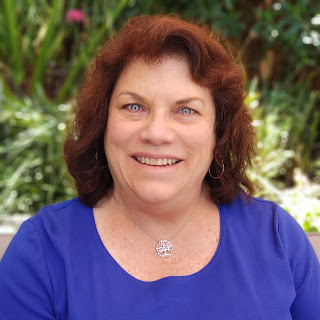 AuthorLinda Ulleseit
AuthorLinda UlleseitLinda Ulleseit, born and raised in Saratoga, California, has an MFA in writing from Lindenwood University. She is a member of the Hawaii Writers Guild, Marketing Chair for Women Writing the West, and a founding member of Paper Lantern Writers. Linda is the author of Under the Almond Trees, which was a semifinalist in the Faulkner-Wisdom Creative Writing Contest, and The Aloha Spirit, to be released in 2020. She believes in the unspoken power of women living ordinary lives. Her books are the stories of women in her family who were extraordinary but unsung. She recently retired from teaching elementary school and now enjoys writing full time as well as cooking, leatherworking, reading, gardening, spending time with her family, and taking long walks with her dogs. She currently lives in San Jose with her husband. They have two adult sons and a spoiled yellow Labrador. For more about Linda and her books, visit: ulleseit.com









July 6, 2020
Tituba - The First Witch of Salem
 Ask just about anyone what they know about Salem in colonial Massachusetts and the most common answer is the witch hunts. But in the middle and late 1600s people knew Salem Town for its shipping. It was the first large seaport in the Massachusetts Bay colony. Salem seafarers and merchants played an important role as the Puritans grew wealth through trade between the mother country and the colony. As the town grew wealthier, it expanded as newcomers arrived and moved inland to establish fertile farms to feed the coastal population. Salem farms, also called Salem Village was established on the outskirts of the harbor town. And that village became ground zero for the first witchcraft accusations in 1692 after people accused an enslaved woman named Tituba of serving the devil by hurting children. Tituba’s owner was the village minister. Her alleged first victims were her master’s children Betty Parris and Abigail Williams, along with a neighbor child, Ann Putnam, Jr.
Ask just about anyone what they know about Salem in colonial Massachusetts and the most common answer is the witch hunts. But in the middle and late 1600s people knew Salem Town for its shipping. It was the first large seaport in the Massachusetts Bay colony. Salem seafarers and merchants played an important role as the Puritans grew wealth through trade between the mother country and the colony. As the town grew wealthier, it expanded as newcomers arrived and moved inland to establish fertile farms to feed the coastal population. Salem farms, also called Salem Village was established on the outskirts of the harbor town. And that village became ground zero for the first witchcraft accusations in 1692 after people accused an enslaved woman named Tituba of serving the devil by hurting children. Tituba’s owner was the village minister. Her alleged first victims were her master’s children Betty Parris and Abigail Williams, along with a neighbor child, Ann Putnam, Jr. The history books and records tell us what Tituba said and did after they arrested and charged her. But there is no information, not an inkling, of what she was like as a human being.
Most of the others involved in the Salem tragedy, those afflicted by witches, the judges, witnesses and the accused, have modern descendants scattered around the globe. For many of the descendants, it seems to be a mark of pride when they identify an ancestor involved in the Salem witchcraft story. Tituba is an exception because no one knows what happened to her.
Court records show the how and why Tituba was charged. They show she at first denied the crime until she was “interrogated”. And after they persuaded her to confess, she surprised them all by naming two other women as fellow witches, servants of the devil. In subsequent court hearings Tituba called out the existence of more witches, some of them flying in from distant Boston!
The written documentation lays out the latent fears the Puritan colonists lived with. Those fears in some combination lead to the hysteria that drove hundreds of accusations, dozens of trials, and 19 hangings of innocent people during six months of infamy.
They have preserved sworn depositions and court transcripts in museums and universities. And although the records detail the kangaroo court proceedings, and their rush to judgement with imaginary visions of specters as valid evidence, many questions remain. Historians still comb through occasional newly discovered information. And even so, after analyzing village, town, and colonial government records, parish records and sermon books, the root causes of the events remain shrouded in mystery.
The elusive woman of color, Tituba, who opened the door to the wild accusations of neighbor against neighbor remains a mystery too. No one preserved records of an uneducated slave, one considered by most to be less than fully human.
Enter the novelist. Without clear evidence of Tituba’s origins and her character, creative fiction can fill the void of a memorable woman erased from history. Her name, Tituba, roughly translated from the west African Yoruba language means one who appeases. Why would an appeaser turn on her masters, then? Dave Tamanini offers his own provocative tale of what happened and why with a bit of magic thrown in.
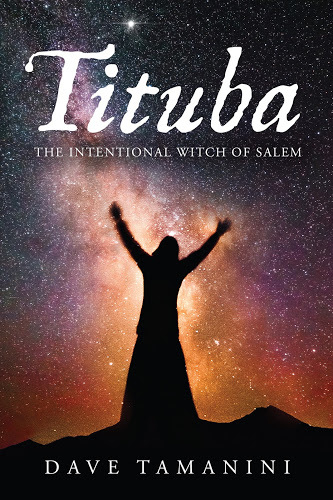
For Dave, it took a while to become a fiction author. Born in the northeastern coal region of Pennsylvania, he lived a nomadic childhood while growing up in a U.S. Army family. He was the first to head off to college. And after earning a B.A. degree at the University of Maryland, he landed a job as a civil rights investigator of race and gender discrimination. That work in the legal field led to the University of Detroit Law School and then private law practice for over thirty years. There is no better work than lawyering to prepare for writing fiction, he says. You get to help clients from all walks of life and learn about human strength, frailty… and hypocrisy.
You can reach Dave at: www.DaveTamaniniAuthor.com or Facebook









June 29, 2020
Mary De Morgan - A Writer of Fairy Tales
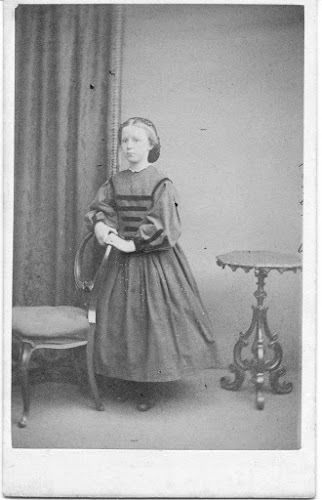 Mary De Morgan (1850 – 1907) was the youngest of seven children and 11 years younger than her eldest brother William. There is little known about her childhood but in the De Morgan Archives, held at Senate House, University of London, there is a small leather-bound notebook in which Mary’s mother, who was a keen spiritualist, recorded her six-year-old daughter’s dreams in which she played with her sister Alice in a jewel garden. Elizabeth Alice had died three years earlier in 1853 at the age of fifteen and was acting, according to the mother, as a spirit guide to Mary. It does not seem, however, that Mary became an avid spiritualist herself, and she dismissed any séances she had to attend as being fake. According to A. M. Stirling in William De Morgan and His Wife, Mary was extremely lively and full of fun as a young girl – and also rather precocious. At 13 she asserted to Henry Holiday, who was a painter, stained-glass designer, sculptor and illustrator, that “all artists are fools.”
Mary De Morgan (1850 – 1907) was the youngest of seven children and 11 years younger than her eldest brother William. There is little known about her childhood but in the De Morgan Archives, held at Senate House, University of London, there is a small leather-bound notebook in which Mary’s mother, who was a keen spiritualist, recorded her six-year-old daughter’s dreams in which she played with her sister Alice in a jewel garden. Elizabeth Alice had died three years earlier in 1853 at the age of fifteen and was acting, according to the mother, as a spirit guide to Mary. It does not seem, however, that Mary became an avid spiritualist herself, and she dismissed any séances she had to attend as being fake. According to A. M. Stirling in William De Morgan and His Wife, Mary was extremely lively and full of fun as a young girl – and also rather precocious. At 13 she asserted to Henry Holiday, who was a painter, stained-glass designer, sculptor and illustrator, that “all artists are fools.”Mary herself, however, became an artist, albeit a literary one. Her first published book in 1873 was Six by Two: Stories of Old Schoolfellows,” and was co-written with Edith Helen Dixon. Nothing is known of where or how Mary was educated but she surely must have been, given her father was a mathematics professor at University College London, and her mother campaigned for women’s education. Six by Two, however, is not autobiographical and gives no clues as to her education. All that can be confirmed is that Mary is not on the records of Bedford College, the first ladies’ college which her mother helped to found, unlike her sister, Alice, who went there for three terms 1850 – 1851, possibly to get her out of the way when Mary was born.
Mary is best known today, if she is known at all, as a writer of fairytales. Mary published three volumes, On a Pincushion in 1877 (published by Seeley, Jackson & Halliday and illustrated by William De Morgan), The Necklace of Princess Fiorimonde in 1880 (published by MacMillan & Co and illustrated by Walter Crane) and The Wind Fairies in 1900 (published by Seeley and Co. and illustrated by Olive Cockerell). In each anthology there are fairytales that challenge the prevalent ideologies by subverting the traditional fairytale conventions and therefore also societal ones.
One of the themes that Mary addresses in her fairytales is that of the dangers of mass-production, a subject very close to the heart of William Morris. Due to her brother William’s close friendship with Morris, Mary became part of the Arts and Craft circle, albeit on the outskirts. Mary was a regular visitor to the Morris household and she often told her stories to Morris himself, the Morris and Burne-Jones children and to the young Rudyard Kipling. The multi-talented Mary also apparently cured William Morris of his fear of snakes and she was one of those who nursed him during his final illness and was at his bedside when he died in 1896.
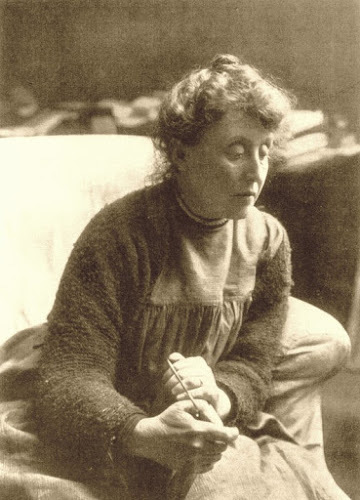
Mary’s fairytales were always marketed as being for children and her critiques on social and political issues have only recently been recognised. Mary didn’t just write fairytales, however. She also wrote short stories, some of which were published in English and American magazines such as The Ludgate Illustrated, Frank Leslie’s Popular Monthly, Sylvia’s Home Journal and The Home-Maker. Other unpublished short stories - all written on the latest technology, the typewriter - are held in the De Morgan Archive at Senate House.
Mary also tried her hand at a two-volume novel called A Choice of Chance written under the pseudonym of William Dodson, but she never wrote another one due to poor reviews. Mary also edited her mother’s reminiscences, Threescore Years and Ten: Reminiscences of the Late Sophia Elizabeth De Morgan and wrote serious articles on such diverse subjects as “Co-operation in England in 1889,” “The New Trades-Unionism and Socialism in England,” “The Jewish Immigrant in East London,” and “The Education of Englishmen,” published in such journals as The Westminster Review and The Chautauquan.
There is no evidence of Mary having had any romantic relationships. Whatever the reason, whether from choice or otherwise, Mary, like many other women at the tail end of the nineteenth century, remained unmarried, an “Odd Woman,” and because there were no male members of the family with sufficient funds to keep her, she had to earn her own keep. It does not seem likely that she made sufficient money from her writing alone. In 1876, for instance, she received £14 18s 6d (less than £2,000 in today’s money), being a third of the year’s profit from the sale of her first volume of fairytales, On a Pincushion – another third going to the illustrator, her brother William, and the other third to the publishers, Seeley, Jackson and Halliday. She may not have earned enough to live on from her writing alone but she also received dividend payments from stocks she owned. She once told her sister-in-law, Evelyn (nee Pickering, married to William De Morgan and a well-known painter), that “I am so thankful I have only a small income – it is so delightful planning things and deciding what one can afford. It would bore me to death to be rich!” Ironically, when brother William turned to writing novels in later life, he made far more money than she ever did from her writing, and indeed than he had ever done from ceramics.
Mary also followed in her mother’s footsteps and did her social duty by visiting the poor families in the East End of London, running a mothers’ club and for a couple of years she was the secretary of the People’s Concert Society, which brought classical concerts to the East End. She was also a member of the Women’s Franchise League and in 1889 she joined other artistic women to sign the Declaration in Favour of Women’s Suffrage.
By the turn of the nineteenth century Mary was a relatively well-known and respected published writer, albeit not a very well paid one. She does not seem to have written anything after 1900 and at the beginning of the new century she went to live in Egypt, for health reasons, where she became a directress of a girls’ reformatory in Helouan – how this came about has not been established, despite intense research. She died of tuberculosis, what brother William called the “De Morgan curse,” in 1907 at the age of 57 and is buried in the Protestant Cemetery in Cairo. Her plot has no stone to mark her last resting place, there having been subsidence many years previously.
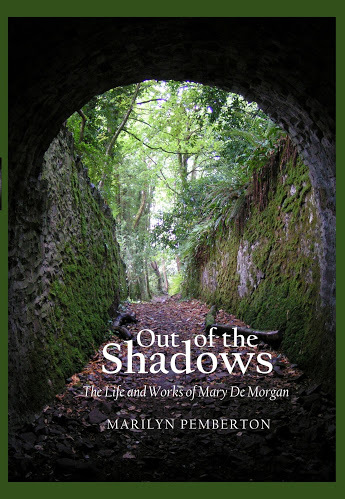
Amazon
AuthorMarilyn Pemberton
Website: https://marilynpemberton.wixsite.com/author









June 21, 2020
Suffragettes - Victoria Woodhull and Tennessee Claflins
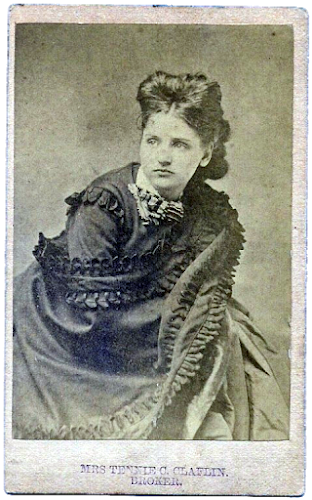
In 1868, spiritualists and sisters, Tennessee Claflin and Victoria Woodhull arrived in New York City and established themselves at 17 Great Jones Street. The excerpt from the Buffalo Daily Courier ( below) was provided by the wonderful website dedicated to Victoria Woodhull (www.woodhullrising.org).
“We have seen one of the clairvoyants, and she is beautiful enough to cure anybody. She is young and childish in her manners, with Titian hair, which falls in rich masses about her head, blue eyes which wear an honest steadfast look, asymmetrical figure which is costumed in excellent taste and a pretty hand which sparkles with gems. Now we can’t see why a chronic case of heart disease should be cured at all, with such a healing medium. This lady’s name is Miss Tennessee Claflin, and while we admit that there is some power in this art of healing, we confess that we know nothing, only that hopeless people go there, and after a brief stay of days or weeks, return home cured... Perhaps of all the healing spots of the city, this is the most interesting to the curious speculator in mysterious things and is the prettiest hospital in New York. Their patronage is very extensive, and men and women who would deny their belief in the supernatural go slyly to Miss Tennessee to listen to her weird talk, and to look into her lovely eyes."
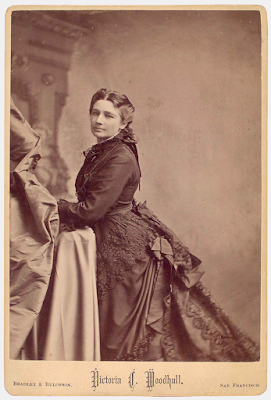
Within months of their arrival, Victoria and Tennessee were soon popping up at suffragist events, hosting dinners with the city's newspaper publishers, and working under the tutelage of Cornelius Vanderbilt to become stockbrokers. But to a writer (i.e. me), attempting to make sense of their life, the early records are so outrageous, one is hard-pressed to separate myth from fact. What is known is this: Victoria married and started a family when she was little more than a girl, and Tennessee was supporting the rest of the family when she was only a little girl. They had an additional three sisters (their surviving brother remained in Ohio) who, with their parents, ran all kinds of interference. But Tennessee and Victoria were singularly gifted and driven to make their mark.
By 1870, they had established Woodhull and Claflin and Company, and by the spring of that year, Victoria had announced she would run for President of the United States. To promote Victoria's campaign, Woodhull and Claflin's Weekly, debuted on May 14th of that year.

With the exception of a few months during 1872, this weekly paper was part of the scene for the next six years. It was lively, it was muckraking and it was read until the November 2nd issue of 1872, wherein it exposed the private life of some eminent citizens, and all hell broke loose. Election night for Victoria was spent in jail, together with her sister, Tennessee. The charge was for sending 'pornography' through the mail. At that point, their story takes another sharp turn where they must contend with no longer being the toast of the town.
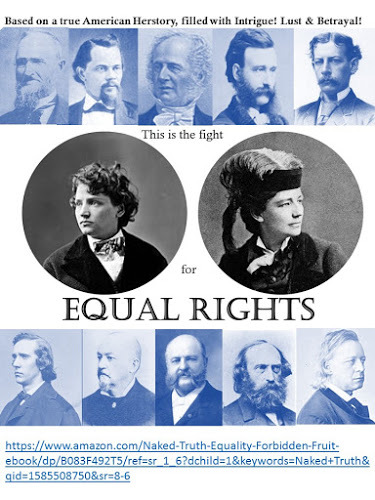
The Novel by author Carrie Hayes, Naked Truth or Equality, the Forbidden Fruit, covers the years that they were in New York City until they left for Great Britain in 1877.
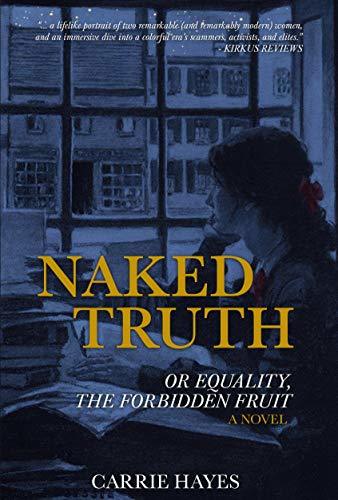
Purchase on Amazon
AuthorCarrie Hayes

Since the age of nine, Carrie Hayes has most frequently been found somewhere lost, in the pages of a good book. A stalwart enthusiast of parts for girls and female characters, historical fiction is her very favorite genre. In addition to her being a passionate reader, Carrie is also a voracious eater, former schoolteacher, ex casting director, office administrator, retired decorator, and failed librarian. Carrie lives with her family in central New Jersey. Naked Truth or Equality the Forbidden Fruit is her first book.
www.carriehayes.net
https://www.bookbub.com/authors/carrie-hayes
https://medium.com/@carriehayz









Suffragettes - Victoria Woodhul and Tennessee Claflins

In 1868, spiritualists and sisters, Tennessee Claflin and Victoria Woodhull arrived in New York City and established themselves at 17 Great Jones Street. The excerpt from the Buffalo Daily Courier ( below) was provided by the wonderful website dedicated to Victoria Woodhull (www.woodhullrising.org).
“We have seen one of the clairvoyants, and she is beautiful enough to cure anybody. She is young and childish in her manners, with Titian hair, which falls in rich masses about her head, blue eyes which wear an honest steadfast look, asymmetrical figure which is costumed in excellent taste and a pretty hand which sparkles with gems. Now we can’t see why a chronic case of heart disease should be cured at all, with such a healing medium. This lady’s name is Miss Tennessee Claflin, and while we admit that there is some power in this art of healing, we confess that we know nothing, only that hopeless people go there, and after a brief stay of days or weeks, return home cured... Perhaps of all the healing spots of the city, this is the most interesting to the curious speculator in mysterious things and is the prettiest hospital in New York. Their patronage is very extensive, and men and women who would deny their belief in the supernatural go slyly to Miss Tennessee to listen to her weird talk, and to look into her lovely eyes."

Within months of their arrival, Victoria and Tennessee were soon popping up at suffragist events, hosting dinners with the city's newspaper publishers, and working under the tutelage of Cornelius Vanderbilt to become stockbrokers. But to a writer (i.e. me), attempting to make sense of their life, the early records are so outrageous, one is hard-pressed to separate myth from fact. What is known is this: Victoria married and started a family when she was little more than a girl, and Tennessee was supporting the rest of the family when she was only a little girl. They had an additional three sisters (their surviving brother remained in Ohio) who, with their parents, ran all kinds of interference. But Tennessee and Victoria were singularly gifted and driven to make their mark.
By 1870, they had established Woodhull and Claflin and Company, and by the spring of that year, Victoria had announced she would run for President of the United States. To promote Victoria's campaign, Woodhull and Claflin's Weekly, debuted on May 14th of that year.

With the exception of a few months during 1872, this weekly paper was part of the scene for the next six years. It was lively, it was muckraking and it was read until the November 2nd issue of 1872, wherein it exposed the private life of some eminent citizens, and all hell broke loose. Election night for Victoria was spent in jail, together with her sister, Tennessee. The charge was for sending 'pornography' through the mail. At that point, their story takes another sharp turn where they must contend with no longer being the toast of the town.

The Novel by author Carrie Hayes, Naked Truth or Equality, the Forbidden Fruit, covers the years that they were in New York City until they left for Great Britain in 1877.

Purchase on Amazon
AuthorCarrie Hayes

Since the age of nine, Carrie Hayes has most frequently been found somewhere lost, in the pages of a good book. A stalwart enthusiast of parts for girls and female characters, historical fiction is her very favorite genre. In addition to her being a passionate reader, Carrie is also a voracious eater, former schoolteacher, ex casting director, office administrator, retired decorator, and failed librarian. Carrie lives with her family in central New Jersey. Naked Truth or Equality the Forbidden Fruit is her first book.
www.carriehayes.net
https://www.bookbub.com/authors/carrie-hayes
https://medium.com/@carriehayz









June 15, 2020
China Mary - The Woman who ran "The Town Too Tough to Die"

The Old West holds a distinctive place in the annals of American history. It was an optimistic time where the western frontier encapsulated opportunity itself. Of all the legendary settlements that popped up along the western frontier, none were more infamous than Tombstone. Founded in 1877, Tombstone, Arizona was soon dubbed “The Town Too Tough to Die”. More than 140 years later, it still holds that moniker. Tombstone featured over 100 saloons, 14 gambling halls, the first real “red light” district in the American Southwest and a livery stable called the O.K. Corral. The old west will always be remembered as the era of the Cowboy but during its peak years, Tombstone was controlled by a female immigrant. Her name was China Mary and she ran “The Town Too Tough to Die”. The woman known as China Mary was born nee Sing (aka Ah Chum) in Zhongshan County, China in 1839. She arrived in Tombstone sometime in late 1879. At that time the Chinese population in Tombstone was eleven people. Within eighteen months, that had grown to over two-hundred fifty. Mary was drawn to Tombstone because she was an astute businesswoman. She recognized the unprecedented profits waiting in the western “boomtowns”; and Tombstone was one of the most prolific boomtowns in the history of the west. Due to the unprecedented silver production, the town of Tombstone grew in population from 100 to around 14,000 in less than seven years. By the mid 1880s, it was larger than San Francisco and was the fastest growing city between St. Louis and San Francisco. According to actress Josephine Marcus,“The grimly humorous phrase about our town was that Tombstone had a man for breakfast every morning”.Despite its tough reputation, Tombstone was the most cultivated city west of the Mississippi and China Mary was the most powerful person in it. This is because she held the strings to “Hoptown”. Hoptown, where all the Chinese lived, took up one square block on one end of town, and was honeycombed with alleys and tunnels. It was so named because it appeared to the townspeople that the Chinese “hopped” in and “hopped” out. China Mary, who was usually adorned in fine silk robes and brilliant jade jewelry, owned and operated a general store located in the heart of Hoptown. Mary’s store dealt in both American and Chinese merchandise. She quickly gained a reputation as a universal accommodator. Everyone knew that nothing in Hoptown was done without China Mary’s go ahead so she was held in high esteem throughout Tombstone society. She was an organized and shrewd business operator who had the attitude that discourse was bad for business. Her private police force handled any problem that arose within her community and was much feared by the “round-eyes”, as they called the whites. Mary enjoyed the highest level of respect. As a result, she could act as a sort of intermediary between the Asian community and other ethnic groups. In addition to dealing in customary goods of the day, Mary also controlled several industries that were commonplace, if not essential, to a town on the frontier. For example, Mary was a prolific money lender where she had her own methods of both approving customers and collecting delinquent debts. She also controlled the laundry business. Mary had a virtual monopoly on hand laundry commerce in the dusty desert town because she was the bridge to the desired Chinese workforce. She brokered the employment for nearly every Chinese worker in Tombstone and personally guaranteed their honesty and quality of work. Her assurance was simple, "Them steal, me pay!" As far as payment was concerned, it was always made to China Mary and never to the employee. Her capacity lay somewhere between a local politician, adjudicator, and translator. However, when Mary saw opportunity, like any good businesswoman, she exploited it. The vice trade was big business in Tombstone and China Mary was its biggest purveyor. In addition to running a gambling hall behind her general store, she was also the preeminent broker for opium, laudanum and Chinese prostitutes. Mary did not discriminate. She recognized the benefit of catering to markets of all nationalities. She also ensured that the terms of every business deal or vice arrangement would be performed to her stipulation. Tombstone may have had its share of violent killers, but nobody was as feared as the one who reigned over Hoptown and her team of loyal enforcers. Law and order was at best a blurred line, but not in the kingdom of China Mary. Mary was a hard woman because she had to be. Her times demanded it. But that is not to suggest that she was without compassion. It was said that in Hoptown, any person in need of medical attention would never be turned away at Mary’s door. Her charity was not limited to the Chinese contingent either. On one particular occasion, a cowboy named Andy Darnell suffered a badly broken leg after falling from his horse. Tombstone did not have a hospital so other arrangements had to be made. Darnell had to heal at a local boarding house operated by a woman named Mary Tack. China Mary insisted on paying for all costs associated with the injured cowboy’s recovery. Mary was notorious for many reasons but among them was the empathy she showed to those in need. The “Town Too Tough to Die” survived its infancy because the diverse community was able to coexist. It was allowed to thrive due to the collaboration if its citizens. China Mary was the conduit that made that cooperation possible. She provided necessary services to a burgeoning frontier society and supplied the means of vice demanded by many of its inhabitants. She was not only a cunning businesswoman, but a sympathetic humanitarian and a calculating capitalist. Mary’s was a genuine immigrant success story and even as a woman in the old west, she wielded real power. Mary died in December, 1906 of heart failure. She was 67 years old.
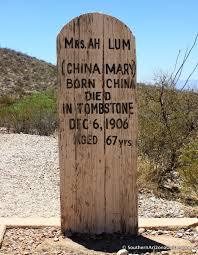
Over one thousand people attended her funeral. She was buried at Boothill Graveyard in Tombstone, so named because most of the people interred there died with their boots on. Her grave is one of the top tourist attractions in Tombstone to this day.
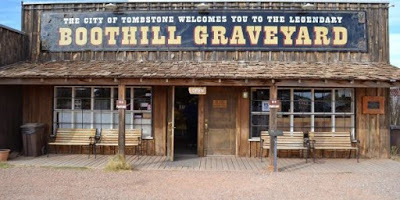 Although China Mary came from the Far East, she will always be remembered as a great woman of the West. Her popularity continues to gain traction since her death. In 1960, Mary was portrayed by actress Anna May Wong in an episode of the television series, “The Life and Legend of Wyatt Earp”. Released in 2020, the Vali Benson novel, “Blood and Silver”, is a fictional account of her actual influence. It details Mary’s supremacy in Tombstone as an honorable woman of standing who was feared, admired, and respected.
Although China Mary came from the Far East, she will always be remembered as a great woman of the West. Her popularity continues to gain traction since her death. In 1960, Mary was portrayed by actress Anna May Wong in an episode of the television series, “The Life and Legend of Wyatt Earp”. Released in 2020, the Vali Benson novel, “Blood and Silver”, is a fictional account of her actual influence. It details Mary’s supremacy in Tombstone as an honorable woman of standing who was feared, admired, and respected.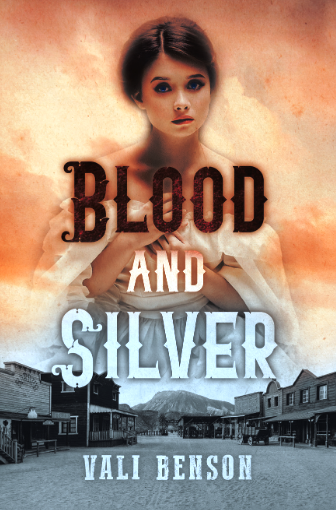
Purchase on Amazon
Vali Benson grew up in the Midwest. She now lives in Tucson with her husband, two sons and grandchildren. After graduating from the University of Illinois, Vali started and sold two successful businesses before she decided to pursue her real passion of writing. She published several articles in a variety of periodicals, including History Magazine before she decided to try her hand at fiction. In April of 2020, Vali published her first novel, “Blood and Silver”. That same month, she was also made a member of the Western Writers of America.
You can visit Vali Benson at: http://valibenson.com/









March 1, 2020
Women Rule during Women's History Month
March is Women's History Month! History and Women blog is a celebration of all things womanly, honoring those who have forged the path for the women of today - suffragettes, politicians, fashion, business, science and more.
Whether you are a regular follower of my blog or if this is your first visit, I invite you all to page through the posts that have made this blog so successful - nearly 4.5 million page visits.










